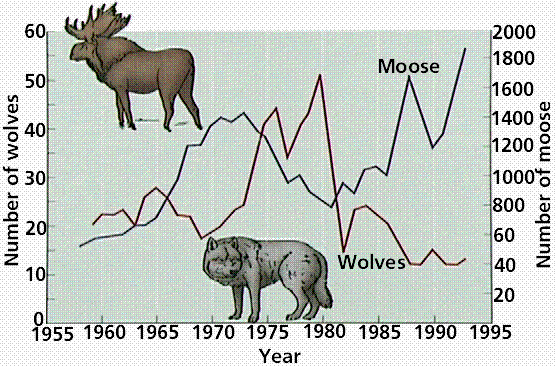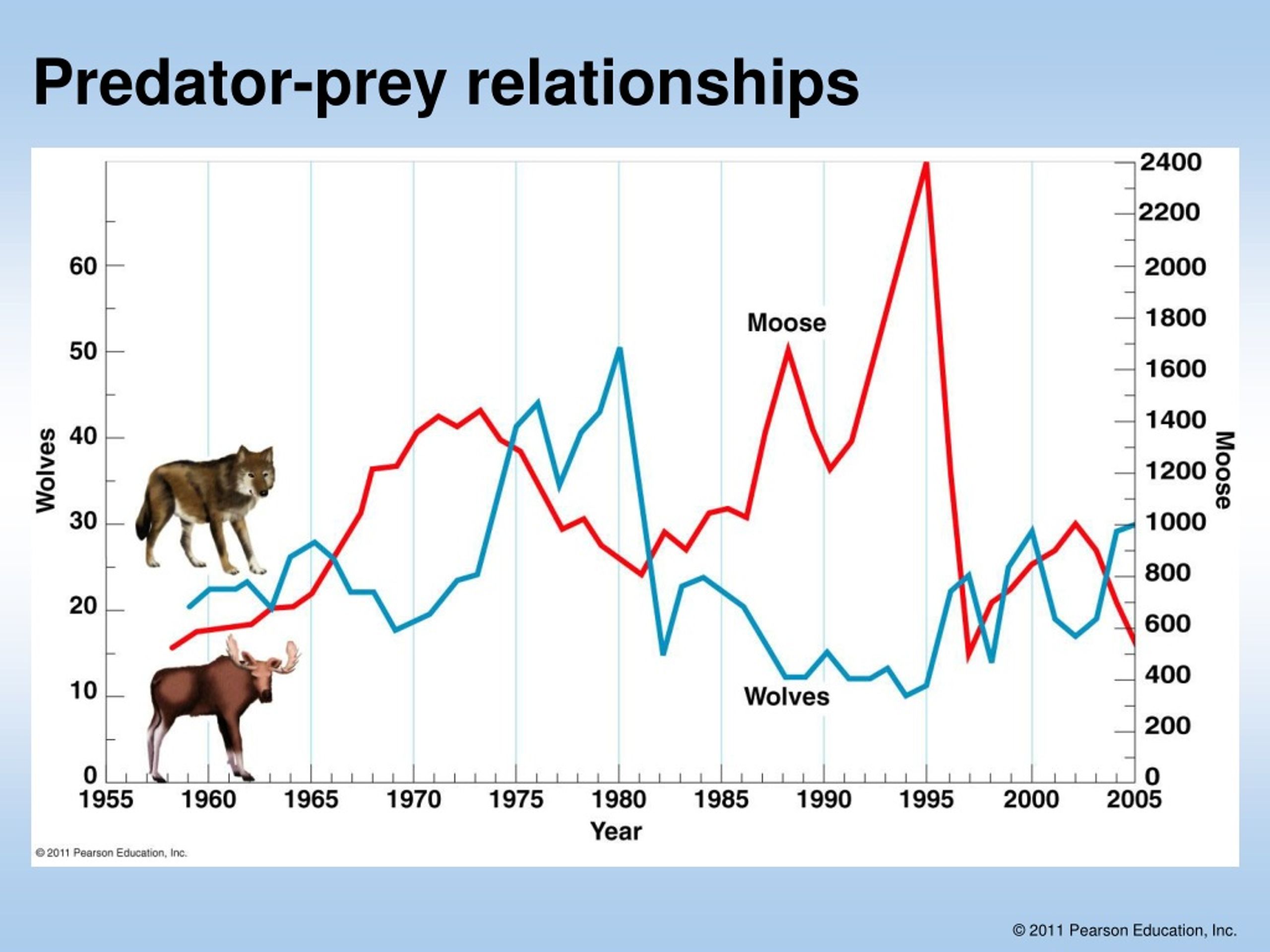I am made of cells, I reproduce, I grows and develop, I respond to the environment, And I use energy. What am I?
An organism
What biome is this?
Tundra
What is a producer?
A plant/something that produces energy through photosynthesis
What year was there a sharp decrease in the wolf population?

1980
Biotic factors
Number of organisms of the same species living in the same place at the same time
Population
What biome is this?

Deserts
What is a primary consumer?
An animal that eats producers/ herbivore
Why did the moose population increase from 1989-1999?

Because the wolves were all killed off due to sickness, meaning there was less predators to kill the moose
All the living things in the world
The Biosphere
Number of organisms of different species living in the same area at the same time
Community
What biome is this?

Deciduous/Temperate forest
What is an animal that has no natural predators?
A top predator
Describe the relationship between the hare and lynx populations.

They increase and decrease at roughly the same rate
Something that prevents a population from growing too large
All the living and non-living things in an environment at the same time
Ecosystem
Name a limiting factor of the tundra
Poor soil, short growing seasons, permafrost, low precipitation, little vegetation, cold temperatures
What is a secondary consumer?
An animal that eats the primary consumers
Why did the moose population decline in 1995, even though the wolf population was low at the time?

Because the moose population exceeded the carrying capacity/there wasn't enough resources (food) to support the moose
Maximum size population that an ecosystem can support over a long period of time
Carrying capacity
If the death rate is higher than the birth rate, the size of a population..
Shrinks/ goes down
The grasslands of South America are called..
The Pampas
What is a tertiary consumer?
An animal that eats the secondary consumers
What is the carrying capacity of the hare population?
Around 100
The pattern of ages at which organisms in a population tend to die
Mortality Pattern